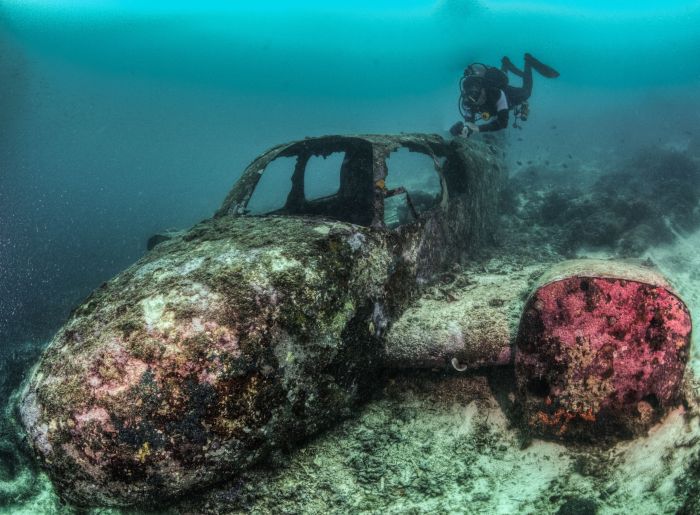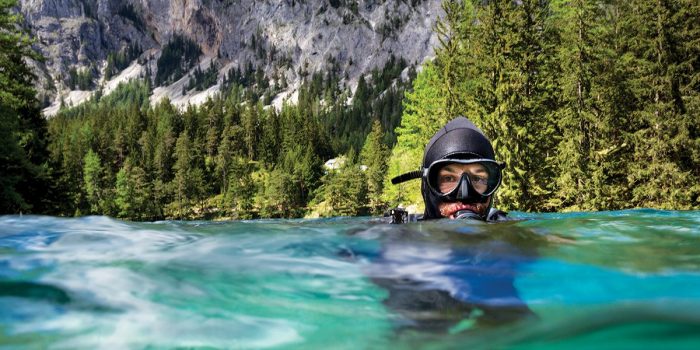When diving at an altitude above 300 metres 1000 feet – When diving at an altitude above 300 metres (1000 feet), divers encounter a unique set of challenges and rewards. This article delves into the safety considerations, equipment modifications, dive planning, training, emergency procedures, and ethical considerations associated with high-altitude diving.
By understanding these factors, divers can mitigate risks and maximize their enjoyment of this exhilarating activity.
As we ascend to higher altitudes, the surrounding air pressure decreases. This reduction in pressure affects the behaviour of gases within the body and equipment, requiring divers to adapt their diving practices accordingly. High-altitude diving demands meticulous planning, specialized equipment, and a thorough understanding of the physiological effects of altitude.
1. Safety Considerations for High-Altitude Diving

Diving at altitudes above 300 meters (1000 feet) poses increased risks due to the reduced atmospheric pressure, which affects gas consumption, decompression requirements, and emergency procedures.
Increased Gas Consumption
The lower atmospheric pressure at high altitudes causes divers to breathe more air to meet their oxygen demands, resulting in increased gas consumption and reduced dive times.
Decompression Requirements
The lower ambient pressure at high altitudes means that nitrogen is absorbed into the body’s tissues more slowly. This requires longer decompression stops and more conservative dive profiles to avoid decompression sickness.
Emergency Procedures
Emergency procedures at high altitudes are more complex due to the reduced oxygen availability. Divers may experience altitude sickness, decompression sickness, or other emergencies that require immediate ascent and specialized medical treatment.
2. Equipment Modifications for High-Altitude Diving: When Diving At An Altitude Above 300 Metres 1000 Feet

Buoyancy Compensators
Buoyancy compensators (BCDs) must be adjusted for the lower buoyancy at high altitudes. Divers should add weight to their BCDs to maintain neutral buoyancy and prevent uncontrolled ascents.
Regulators
Regulators should be serviced and adjusted for high-altitude diving to ensure optimal performance and prevent free-flow at reduced ambient pressures.
Other Equipment
Other equipment, such as wetsuits, drysuits, and diving computers, should also be modified or replaced with specialized gear designed for high-altitude conditions.
3. Dive Planning and Execution at High Altitudes

Meticulous Dive Planning
Dive planning at high altitudes requires meticulous risk assessment and consideration of factors such as altitude, weather conditions, dive depth, and dive duration.
Managing Decompression
Divers must carefully manage decompression to avoid decompression sickness. Conservative dive profiles, longer decompression stops, and surface intervals are essential.
Avoiding Altitude Sickness
Divers should ascend gradually to avoid altitude sickness, which can occur when the body does not have enough time to adjust to the reduced oxygen levels.
4. Training and Certification for High-Altitude Diving

Specialized Training
High-altitude diving requires specialized training and certification to ensure divers are competent in handling the unique challenges and risks associated with diving at high altitudes.
Proper Experience
Divers should have extensive experience in diving at lower altitudes before attempting high-altitude dives. This experience provides the necessary skills and knowledge to handle potential emergencies.
5. Emergency Procedures for High-Altitude Diving
Decompression Sickness, When diving at an altitude above 300 metres 1000 feet
Emergency procedures for decompression sickness at high altitudes involve immediate ascent and recompression in a hyperbaric chamber.
Altitude Sickness
Altitude sickness can be managed by descending to a lower altitude and providing oxygen therapy.
Other Emergencies
Other emergencies, such as equipment failure or lost divers, require prompt and coordinated response, taking into account the unique challenges of high-altitude diving.
Frequently Asked Questions
What are the primary risks associated with high-altitude diving?
The primary risks include increased gas consumption, altered decompression requirements, and altitude sickness.
How does altitude affect gas consumption?
At higher altitudes, the lower air pressure causes gases to expand, leading to increased gas consumption during both descent and ascent.
What specialized equipment is required for high-altitude diving?
Divers may need to adjust their buoyancy compensators, regulators, and breathing gases to account for the changes in pressure and gas behaviour at altitude.